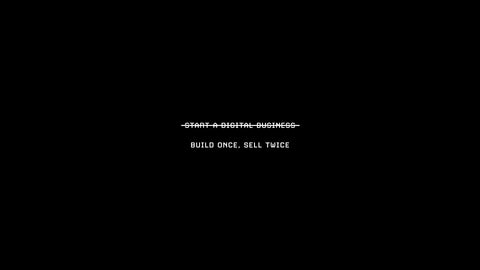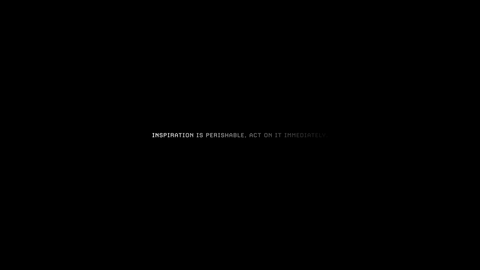Guest Author: Polina Marinova Pompliano
What distinguishes the great from the truly exceptional?
After four years of writing The Profile, I've studied how the most successful and interesting people in the world reason their way through problems, rise up in times of hardship, and perform under extreme pressure.
The highest-performers don't use "tricks" or "hacks" to achieve greatness. They use mental frameworks that fundamentally change the way they see the world.
Below are the five mental models that I've identified exceptional people use every day:

1. They start from first principles
The most exceptional people are able to think independently without succumbing to society's immense pressure to conform.
Take SpaceX CEO Elon Musk, who's one of the most radical thinkers of our time. Musk believes we need to think like a scientist, cut through all the conventional thinking, and start with only the information you know to be scientific fact. Here’s what he says about how he learns: “It is important to view knowledge as sort of a semantic tree — make sure you understand the fundamental principles, like the trunk and big branches, before you get into the leaves/details or there is nothing for them to hang on to.”
Another such thinker is chef Grant Achatz. He once saw a giant-scale piece of art and asked himself: "Why can't we plate on that?" "It frustrated me that, as chefs, we were limited to scale that was determined by plate manufacturers," he says. "Why not a tablecloth that we can eat off of? Why do you have to eat with a fork or a spoon? And why does it have to be served on a plate or in a bowl?" Remember, every revolutionary idea starts with the question "Why?"

2. They focus on process over outcome
The people who are at the top of their fields have the same thing in common: They insist on precision and have an eye for the tiny, obscure details. That's because greatness is about the unrelenting pursuit of perfection.
Monica Aldama is the head coach of Navarro Junior College, which boasts one of the best college cheer programs in the country. She is a no-bullshit leader who repeats one sentence over and over again regardless if you failed or nailed the stunt — “Do it again.” She seeks out the obscure details that make up our daily routines, improving them by small increments, and repeating the habits until they stick. Her motto is: “You keep going until you get it right, and then you keep going until you can’t get it wrong.”
Alabama's head football coach Nick Saban has a similar saying: "Don't look at the scoreboard; play the next play." Saban has a vision he literally calls “the process” — a philosophy that emphasizes preparation and hard work over results. It’s about constantly examining weak spots and gradually improving. If you fall short, you work to meet the standard of excellence next time. And if you win, you work to fight off complacency. The process, then, is never over.

3. They create alter egos when they have to perform
Many high-performers adopt alter egos to summon confidence when they have to perform under extreme pressure.
Believe it or not, early in her career, Beyoncé was shy and reserved, which is antithetical to the powerhouse we saw on stage. That’s because she created an alter ego she called ‘Sasha Fierce’ that allowed her to perform with a level of confidence she herself didn’t yet have. “I’m not like her in real life at all,” Beyoncé said. “I’m not flirtatious and super-confident and fearless like her.”
NBA legend Kobe Bryant created his "Black Mamba" alter ego as a way to get through the lowest point of his career. His nickname was inspired by the movie "Kill Bill," in which the snake, known for its agility and aggressiveness, was used as a code name for a deadly assassin. "The length, the snake, the bite, the strike, the temperament," he said. "That's me!'" At a time when people were chanting "Kobe sucks," while he was playing, Bryant said that using an alter ego gave him emotional distance from his real self. "I was able to switch my mind to something else," he says. "When I make the mental switch [to the Black Mamba], I know it's 'go time.'"
Research supports these mental cues. Adopting an alter ego is an extreme form of “self-distancing,” a psychological tool that helps people reason more objectively and see the situation from a slight distance.

4. They develop mental resilience
Do you know who you are after running for 19 hours straight with no sleep? Do you know who you are when someone manipulates your emotions? Do you know who you are when you hit rock bottom? The most mentally resilient people do.
Ultra-marathoner Courtney Dauwalter has managed to stay calm even through bouts of severe nausea, a bleeding head injury, and temporary blindness. She talks about pain as an actual place: she visualizes herself entering "the pain cave." The reason it’s helpful to personify pain is that it serves as a reminder that you’re in control when you enter and equally as aware that you can leave.
David Goggins has completed three Navy SEAL “hell weeks," more than 50 endurance races, and holds the Guinness World Record for most pull-ups (4,030) in 24 hours. He's mastered the ability to stay calm in chaotic and emotionally-taxing situations by following the 40% rule. The rule is simple: When your mind is telling you that you’re done, that you’re exhausted, that you cannot possibly go any further, you’re only actually 40% done. “A lot of cars have governors on them at, let’s say, 91 miles an hour. It may only go 91 miles an hour because the governor stops it from going 130. We do the same thing to our brain,” he says. “When we get uncomfortable, our brain gives us a way out — usually quitting or taking the easier route.”
The problem is that you can't teach yourself to regulate your physiological and psychological instincts when you're sitting comfortably on your couch. The most resilient people regularly put themselves in challenging situations where they can be "stress-tested."

5. They understand that the biggest successes can come from the most devastating failures
The ability to bounce back after failure is what sets apart the great from the exceptional.
Growing up, Spanx CEO Sara Blakely wanted to be a trial attorney, but then she bombed the LSAT. After college, she auditioned to be Goofy at Disney World, but she was too short to wear the costume. After a stint as an Epcot ride greeter at “the happiest place on earth,” Blakely returned home and moved in with her mom. When she was working on Spanx, she got a ton of rejections but she re-framed failure as an opportunity: Instead of failure becoming an outcome, it simply became about not trying. Plus, she makes a really good point: “Spanx wouldn’t exist if I had aced the LSAT."
In order to avoid becoming complacent, Dwayne ‘The Rock’ Johnson keeps the painful memories at the forefront of his mind. “As crazy as it may sound, in my mind, I’m always a week away from getting evicted, and that’s what keeps me motivated, not the material things,” he says. That thinking shifts his mindset from waiting for opportunity to creating opportunity.
Russian chess expert Lev Alburt has played chess with some of the highest-profile figures in finance, including Carl Icahn and Stephen Friedman. The financiers took lessons with Alburt to get “frustrated, intimidated, and demoralized.” Why? To grow.
When you grow, you get better. And if you get better, you eventually win. That’s why most of our biggest successes often come after our most devastating failures.
Guest Author: Polina Marinova Pompliano









